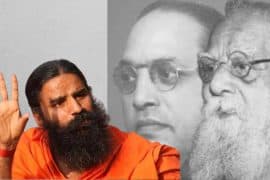As patients are left gasping for air, what are the chinks in the medical oxygen supply chain that lead to this dire situation? This article takes a dive into the oxygen shortage the country is facing in the second wave of this deadly pandemic by exploring the logistical issues that exist in the system.
The Government of India recently claimed that “there was no shortage of medical oxygen in the country” during a hearing in the Supreme Court on issues related to COVID-19. This statement is in stark contrast with the on-ground reality.
Each day, news reports of hospitals running out of oxygen and patients dying because of it are coming out. As hospitals run dry and continue sending SOS messages to authorities, families of patients scramble to arrange oxygen. Social media platforms are cluttered with pleas and requests for different oxygen equipment like cylinders, cans, concentrators, and refilling facilities. The prices of oxygen equipment have increased dramatically, with people paying 3-5 times the normal prices. All of these are signs that give a clear indication- there is an acute shortage.
A closer look at the situation reveals that India’s oxygen scarcity is not a production problem but a faulty supply chain.
DEMAND-SUPPLY ANALYSIS
India’s demand for Liquid Medical Oxygen (LMO) has shot up since the pandemic. According to industry estimates, pre-COVID demand for LMO was about 700 tonnes per day (TPD). This increased four times to be 2800 TPD in the first wave of the pandemic. The requirement for the second wave has increased even more. India now needs 8000 TPD of medical oxygen according to the Union government’s submission to the courts.
To meet this growing demand, the government has taken initiatives to fast-track production.
On April 21, the Centre admitted to the Delhi High Court that India’s current production capacity of LMO was 7200 TPD, short of the 8000 TPD required. By the end of the month, it was reported that production had been ramped up to 9000 TPD. This was a result of increasing the capacity of existing LMO-producing industrial units. Moreover, the government has announced that 500 oxygen plants will be set up across the country over the next three months.
According to the government figures, it checks out that there is no shortage of LMO in the country. The per-day production is enough to meet the per-day requirements, at least for now.
Then why is there an oxygen shortage in the hospitals?
THE JOURNEY

Even though the daily production of medical oxygen is enough to meet the growing demands, transporting this oxygen to the final consumer i.e. the patient, is causing a huge bottleneck in the system.
TROUBLESOME TRANSPORT
The supply chain of industrial gases- including liquid oxygen was not ready to be shifted for medical use. Before COVID-19 there was just a 20% medical requirement for liquid oxygen. Today, 90% of liquid oxygen production is being diverted for medical use.
India has a total of 1919 vehicles for the transportation of industrial gases. Out of these 1919, 516 are exclusively used for the transport of liquid oxygen. There is a dearth of tankers that can transport liquid oxygen from the production units to the distributors. It takes almost 12-14 days for these tankers to travel from the oxygen-producing states of Chhattisgarh and Odisha to the states affected the most by the second wave- Maharashtra, Gujarat, and Delhi.
In an attempt to speed up this process, India decided to transport tankers through railways and airlift empty tankers back to the production units. However, in the one week since the Ministry of Railways began transporting oxygen, it was able to ferry just over 450 metric tonnes of oxygen. All of it went to the states of Maharashtra, Uttar Pradesh, and Delhi. To put the amount transported into perspective, Maharashtra alone needs 1550 TPD of medical oxygen for meeting its requirements. Delhi’s requirements are estimated to be 700 TPD. While the carrying capacity of one oxygen tanker is usually between 14-18 metric tonnes. This low capacity also contributes to the bottleneck in the supply chain.

As states and the Centre work to arrange more tankers, leading hospital chains- Apollo, Fortis and Max approached the courts in a bid to replenish their supplies. However, there is inequity in the distribution of LMO as the major share goes to these hospitals, while the smaller facilities operate on pleas.
CONCLUSION
While there might not be a shortage of oxygen in the country, there is a shortage in the hospitals of the country. The supply chain of liquid oxygen was unprepared for providing quick oxygen for medical use. As a result, people died, waiting for the most basic medical facility. The government showed a lack of preparedness. The centre had sanctioned the building of 162 oxygen plants in public health facilities back in 2020, only 33 of those are functional. With some foresight and preparedness, a lot of deaths could have been avoided.
For the readers- This second wave is difficult. All of us have lost someone or something that we hold dear to this pandemic. It’s important to take some time off to process and grieve. If you feel like writing to someone to express yourself, my email address is written below. I’ll try my best to reply and offer words of support. Take care and stay safe!
Read Also: COVID-19 Aid Resources, Helpline Numbers and Websites
Feature Image Credits- BBC
Abhishek Singh Chauhan
[email protected]



Comments are closed.